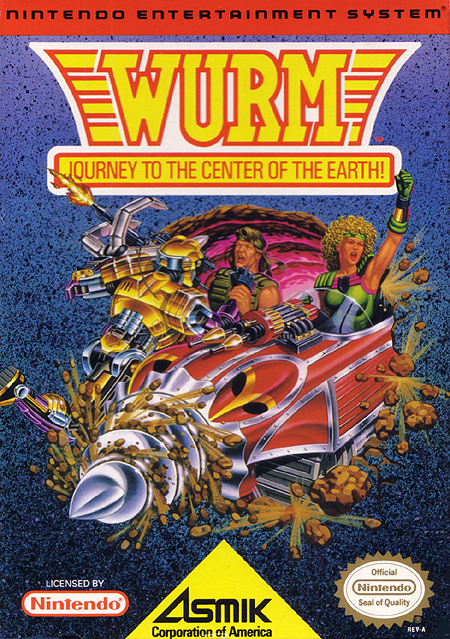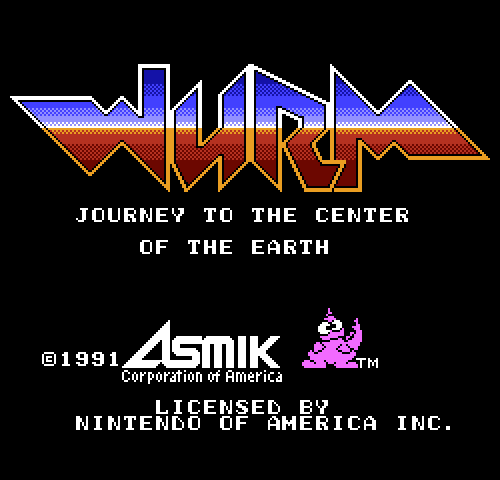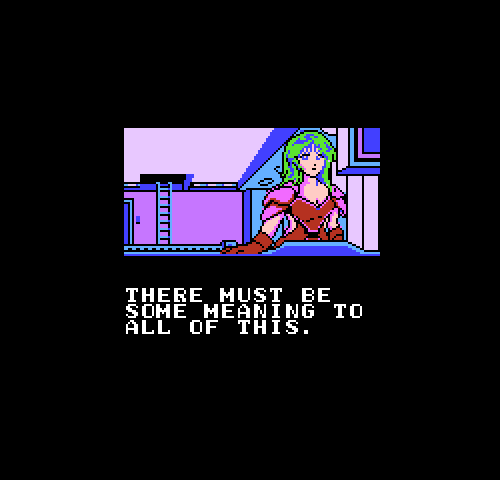Wurm: Journey to the Center of the Earth deserved better. True, it's far from an impressive game, but it's ambitious in telling the story of a subterranean expedition across shooting stages, side-scrolling action levels, and first-person boss battles. The gameplay stays low-key, though, and for that Wurm is often thrown in with the lowest of NES games. Some Japanese sites even classify it among the “kusoge,” those strangely fascinating bad games. Yet there's some admirable creative spark within Wurm. In playing the game and talking to its director, Shouichi “ANGELA” Yoshikawa, one gets the impression that he genuinely cared about what he was making, more so than anyone involved in, say, Transformers: The Mystery of Convoy or Garfield: A Week of Garfield. Wurm is messy, but even its awkward mechanics and barren levels have spirit.
Of course, noble intentions didn't keep a multi-genre experiment like Wurm afloat in a crowded industry. It arrived in the U.S. just after the Super NES stormed the market, ensuring that no one looked at the moribund last generation of NES games. In that light, terrible box art was the least of Wurm's trials.

|
This cover's most notable point is the game's heroine, Moby, who's positively exhilarated about crashing her drilling machine through a wall and into empty space. Or perhaps she's just proud of having a lime-green aerobics outfit and a head covered in bleached, uncooked ramen. Either way, she's too caught up in hard-rockin' glory to notice that her commando partner is locked in a deadly struggle with a huge android. The attacker is waving one huge claw around like a large metal fiddler crab, apparently afraid that the humans will try to mate with its gold-armored robo-crab female (not pictured). Captain Contra doesn't seem all that worried, though. He's more concerned with stifling a sneeze.
 |

|
The art loosely reflects the game, in that both have robots, drilling machines, and a gutsy heroine. Of course, the noodle-haired pilot only vaguely resembles Moby. While their outfits are perhaps comparable, the woman's mane of peroxide worms makes Moby's green tresses look sensible and mundane. These were the days when anime hair was often the lesser of two embarrassments.
Then again, the artist might have been working from the Japanese cover of Wurm. Known as Chitei Senkou Vazolder (or Bazolder), Japan's Wurm bears the work of manga author Minami Matsuda. Someone, perhaps Matsuda, decided that Moby needed greenish-blonde hair, placing her locks in the ranks of the color-changing styles worn by heroines like Metroid's Samus Aran and Phantasy Star's Alis.
Vazolder's box illustration is paler and considerably less gung-ho than the North American release's vision of a miner's union staffed by hair-metal bands, but it scores points with its soft look and Moby's odd multi-gun, the type of firearm that every violent little kid designs at least once in grade school. This version of Moby is carefully reloading her mash-up of a pistol instead of roaring with drill-fueled triumph, but it's all right. Like Wurm itself, at least she's trying.